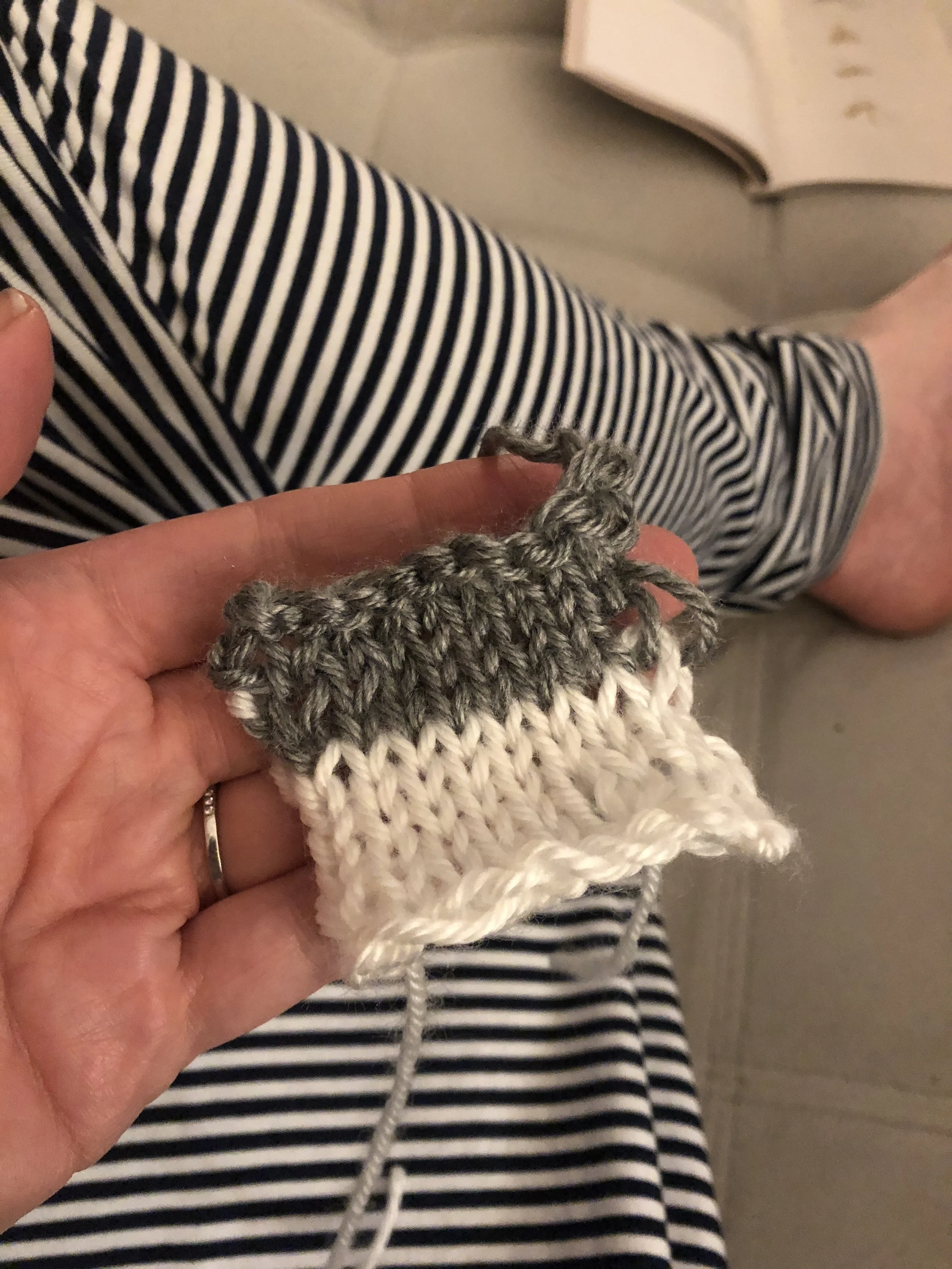No talent? Play anyway.
Talent is convenient.
It’s undeniably helpful to have early promise or natural aptitude in a particular area. We tend to enjoy things we’re good at. If you are naturally good at something, you will stick with it all the way to mastery.
However, the flip side concerns me more. If you are not naturally good at something that you really want to master, I urge you to stick with it anyway. Sooner or later, with consistent effort over time, some aspect of it will click. When you evaluate things several weeks, months, or years later, you may even find that your results are indistinguishable from the “talented” person.
I have seen this phenomenon in my own life. A few months ago, enjoying some free time in glamorous Dayton, Ohio, for a wedding weekend, I decided I was going to learn to knit.
I popped down to a nearby store early one gray morning and popped out with a how-to-knit booklet complete with needles, plus a few skeins of cheap acrylic yarn.
I did not expect this to be easy for me, and I was not disappointed. It took almost an hour of dedicated effort to figure out how to make the simple slipknot that secures the yarn to the needle. I couldn’t understand, based on my how-to book, what a slipknot should look like or what the steps were to make one, so I looked at a bunch of different websites and videos. My circumstances allowed me access to YouTube but not to the soundtracks of the videos; that may have slowed me down a little, but mostly, it just took me a long time to see what I was supposed to see.
Eventually, I nailed the slipknot. Next, it was time to cast on. This step secures the correct amount of stitches to the needle so that your piece will be the correct width. It took me about ninety minutes to learn the knitted cast-on, something that would probably take the average person about ten minutes to master.
About an hour into the process, I said to myself, “This is where someone would just give up and say, ‘I can’t do this.’” That is certainly what the evidence suggested. But since I am a teacher, familiar with the ups and downs of the learning process, I knew that it wouldn’t always be this hopeless. At least, I hoped that it wouldn’t be. It was clear that talent wouldn’t be coming to save me, but grim determination might.
By the time I mastered the cast-on, I was pleased to discover that the knit stitch was really just a variation of the knitted-cast on I had just spent a long time studying. Further, I was excited that I was beginning to see patterns in the loops of yarn. Something was finally clicking, even though the yarn kept slipping off the slippery aluminum needles, forcing me to start over because I didn’t know how to fix it.
After a morning of more than four hours of intense effort, here’s what I had to show for it:
Undaunted, I pressed on. Despite the inconveniences of the rehearsal dinner, wedding, wedding reception, and post-wedding brunch, I managed to find time to learn to purl and bind off. resulting in this thing of beauty:
By this time, however, I was the furthest thing from discouraged. I was obsessed. My expectations had been so low at the start that I was thrilled to be making anything that remotely resembled a knitted fabric. After arriving home, I proceeded to knit a swatch of ribbing and a swatch incorporating two colors:
A couple of weeks later, I was midway through a wool scarf of my own, uh, inspired design:
I completed that masterpiece, and then with the overconfidence of the beginner, I designed and knit a cotton hand towel as a Christmas gift for my mother-in-law. I had no idea that I was supposed to determine the gauge (stitches and rows per inch) before beginning, so the towel came out much bigger than I had anticipated and took much longer to complete than I had planned. I found myself blocking the piece (i.e., putting it into its final shape) moments before I was to wrap it.
From there, I began seeking out other people’s designs. I went on to knit some scarves, hats, and sweaters. I got pretty good pretty fast. By the time I finished a baby sweater and presented it at a baby shower in early February, here’s what I heard:
“You’re so talented! I could never do anything that complicated.”
Oh girl. If you only knew.
Arnica baby cardigan designed by Orlane Sucche, knit by me in January 2019.
Anyone can scroll back up to the pictures at the top to see how little “talent” I have for the mechanics of knitting itself.
If I have a talent, it’s the ability to stick with something and maintain confidence in myself through the process. That’s worth a lot. And that skill, too, can be learned and mastered with consistent effort over time.
You might prefer to stick to the areas where you’re talented, or you might even believe that you don’t have much talent. Either way, you’re selling yourself short. Talent isn’t the be-all, end-all — it’s simply a relatively minor boost at the start of what is likely to be a long and challenging process regardless. You may find that you have what it takes after all.
What would you be able to do if you could push through the pain of not knowing how to do it?














